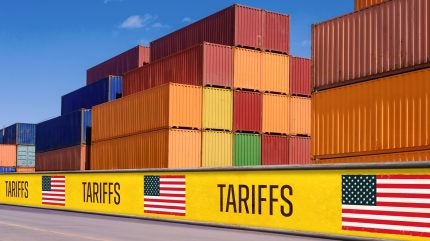
New US tariffs were activated on 7 August following months of negotiations and postponements.
NRF supply chain and customs policy vice president Jonathan Gold said: “While this forecast is still preliminary, it shows the impact the tariffs and the administration’s trade policy are having on the supply chain. Tariffs are beginning to drive up consumer prices, and fewer imports will eventually mean fewer goods on store shelves.

Discover B2B Marketing That Performs
Combine business intelligence and editorial excellence to reach engaged professionals across 36 leading media platforms.
“Small businesses especially are grappling with the ability to stay in business. We need binding trade agreements that open markets by lowering tariffs, not raising them. Tariffs are taxes paid by US importers that will result in higher prices for US consumers, less hiring, lower business investment and a slower economy.”
Data from the Global Port Tracker report for June, the most recent month with finalised statistics, show that US ports handled 1.96m twenty-foot equivalent units (TEUs), a marginal increase from May but an 8.4% decrease from the same month last year.
The report also anticipates a temporary surge in July to 2.3m TEUs as retailers rushed to stock up before tariff impositions. This figure (if correct as ports have not yet reported July numbers) would represent a significant monthly increase and nearly matches the volume from the previous year.
However, projections for subsequent months indicate a downward trend, with August expected to see a 5% decrease year over year and September forecasted to experience a sharp 19.5% decline.

US Tariffs are shifting - will you react or anticipate?
Don’t let policy changes catch you off guard. Stay proactive with real-time data and expert analysis.
By GlobalDataThe report suggests that these lower numbers are partially due to earlier cargo movements in anticipation of tariffs but NRF also notes that late 2024 figures were unusually high due to concerns over potential port strikes.
For the first half of 2025, there was a reported increase of 3.6% in TEU volumes compared to the same period in 2024.
Despite this uptick, the projected slowdown for the remainder of the year could result in an annual total of 24.1m TEUs for 2025, marking a notable contraction from the 25.5m TEUs recorded in 2024.
Hackett Associates founder Ben Hackett said: “The hither-and-thither approach of on-again, off-again tariffs that have little to do with trade policy is causing confusion and uncertainty for importers, exporters and consumers. Friends, allies and foes are all being hit by distortions in trade flows as importers try to second-guess tariff levels by pulling forward imports before the tariffs take effect.
“This, in turn, will certainly lead to a downturn in trade volumes by late September because inventories for the holiday season will already be in hand. Meanwhile, US exporters are being left with unsold products as counter tariffs are applied.”
The Global Port Tracker provides insights into import volumes at key US ports including Los Angeles/Long Beach, Oakland, Seattle/Tacoma on the West Coast; New York/New Jersey, Virginia, Charleston, Savannah, Port Everglades, Miami, Jacksonville on the East Coast; and Houston on the Gulf Coast.





